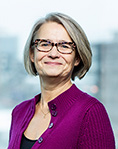New initiatives show European Union’s innovation ecosystem is changing for the better
 Pia Kinhult is Head of Host States and Industrial Relations at European Spallation Source ERIC.
Pia Kinhult is Head of Host States and Industrial Relations at European Spallation Source ERIC.
In the European Union right now, the discussion around research and innovation reflects the recent report by Mario Draghi, former European Central Bank president, on EU competitiveness. His report looked at the challenges for industry in the EU and recommended what can be done to put Europe back on track.
Draghi’s analysis is sharp and to the point, but perhaps the recommendations have a tendency of being more of the same: Carry on as before.
Problems that Draghi points to include a lack of innovation and investments in artificial intelligence compared with other parts of the world.
There are things happening that might change the trajectory for Europe, although these shifts are regional and many states still think the competition is within the EU. This leads to a scattered and fragmented Europe where competition remains internal.
But change appears to be coming. We see a big transformation now in Horizon, the next research program from the EU. The focus on societal benefit is clearer. Collaboration between academia and industry is mandatory.
If this new direction for the EU program and funding succeeds, the whole research and innovation ecosystem can change for the better.
In Lund, Sweden, there is one good example – Future by Lund, an independent organization and economic association founded by the city and Lund University together with 40 companies in Lund. They work with an innovation model they call portfolios in the context of an Innovation District.
Long-term complicated challenges are solved by bringing together researchers and industries, facilitated by Future by Lund. This way, very complicated cases can be brought to the table, with new research collaborations and partners.
The whole idea is to develop methods for finding solutions to big, complex challenges that are not part of normal R&D, but instead point to a totally novel need and solution.
Future by Lund focuses on building shared capacity to drive innovation. They have the ambition to catalyze good conditions for innovation in intersecting areas, including industry, academia and the public sector.
The portfolio method is used to manage many drivers and goals to arrive at a common vision. This strengthens the development of the innovation district in Lund, with an innovation tradition of more than 40 years, leading to a multifaceted ecosystem.
Examples of areas that are under development today include: creative and cultural industries connectivity with STEM (science, technology, engineering and mathematics); how towns can use Internet of Things to make a green transition; and Digital Produce Passport creating circular business models in manufacturing.
Two more examples of change in EU’s innovation ecosystem
Another example comes from the Netherlands and with a focus on technology infrastructure. They suggest creating strategic, high-tech mega-clusters to enhance the value of knowledge. Existing ecosystems need to be expanded to include producers and suppliers in a shift to market-driven innovation.
This would lead to a selected number of strategic hubs on key technologies, like photonics and GenAI, in which partners align strategies, governance and infrastructure.
The Netherlands also hope to see more open access and to intensify usage. The background is a situation where many technology infrastructures are not open to industry, and they take too much time to access. The lack of understanding of the industrial needs and timeline is vast.
The mega-clusters are meant to have huge benefits and lead to faster innovation cycles, better risk-sharing between stakeholders, and retain talent and capital attraction.
The third example of European actions is from Denmark. The government invests in “Lighthouses” in eight strategic areas of research. These flagships are supposed to gather the best in research from all Danish universities to one platform and include relevant industries in projects, and in this way gain traction in advanced technology areas and areas of excellence.
One university hosts the Lighthouse, but must include all universities in the work. The various Lighthouses do differ a bit.
For example, the Lighthouse Life Science is a broad public-private partnership to address complex health care challenges. The coalition consists of over 300 partners.
The ESS Lighthouse – SMART (standing for “structure of materials in real time”) is a consortium of 25 researchers across Danish universities, Danish industry, and the Danish Technological Institute, plus researchers from the MAX IV national laboratory and the multidisciplinary research facility European Spallation Source (ESS) ERIC in Lund, Sweden.
These initiatives represent a national investment in knowledge, in both how to use advanced infrastructure for green technology, but also for Danish involvement in developing new instruments at both MAXIV and ESS.
I offered three different examples of how Europe, at both national and regional levels, is trying to find solutions and counter the threat – that the EU will fall further behind in global competitiveness – which Draghi cited in his report. The question is whether there is enough urgency to act. We are on a slippery slope, and a sense of urgency is not shown by all states and actors in the EU’s innovation ecosystem.
In thinking about the recent Nobel prizes, the 2025 Nobel Prize in Economic Sciences, in memory of Alfred Nobel – awarded for explaining innovation-driven economy growth – is what comes to mind. We need more disruptive innovation in Europe to respond to and find solutions for future challenges.
R$
| Organizations: | |
| People: | |
| Topics: |
Events For Leaders in
Science, Tech, Innovation, and Policy
Discuss and learn from those in the know at our virtual and in-person events.
See Upcoming Events
You have 0 free articles remaining.
Don't miss out - start your free trial today.
Start your FREE trial Already a member? Log in
By using this website, you agree to our use of cookies. We use cookies to provide you with a great experience and to help our website run effectively in accordance with our Privacy Policy and Terms of Service.




